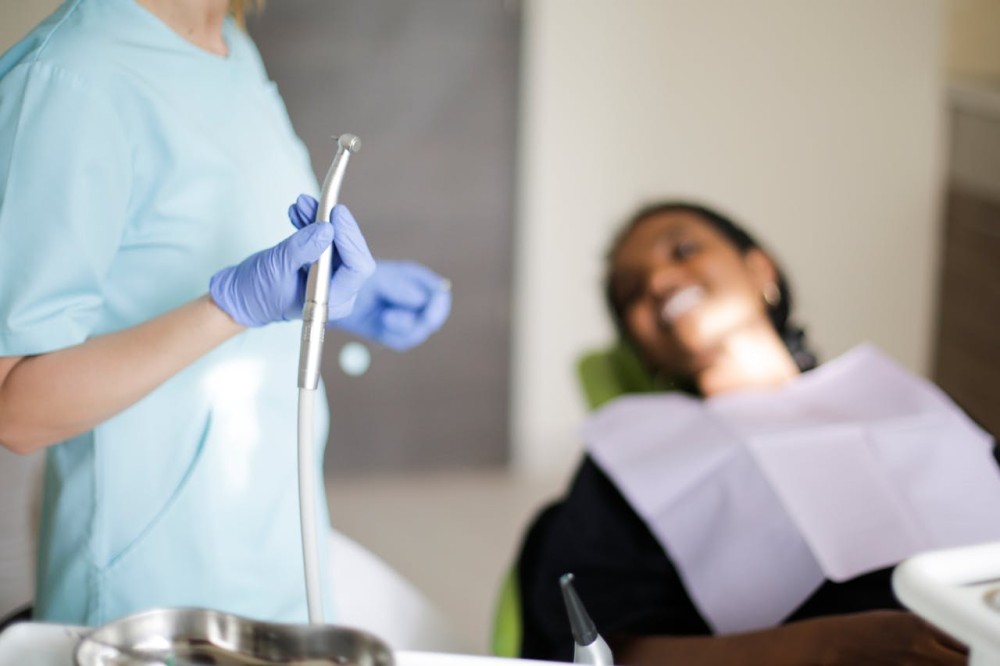
Are dental aerosols harmful?
Dental procedures frequently produce aerosols such as fine droplets of saliva, blood, and other substances that can pose health risks if not properly managed.
Understanding the potential hazards of dental aerosols and implementing effective mitigation strategies is crucial.
In this blog, we’ll explore the risks associated with dental aerosols and discuss solutions to minimise their impact.
What Are Dental Aerosols?
Dental aerosols are tiny particles released into the air during various dental procedures.
These procedures include:
- High-Speed Drilling: Used for tooth preparation and other treatments.
- Ultrasonic Scaling: Utilises ultrasonic vibrations to clean teeth.
- Air Polishing: Employs a stream of air mixed with abrasive powder to clean teeth.
These actions generate a fine mist of particles that can remain airborne for extended periods, potentially contaminating the environment and posing risks to both patients and dental staff.
Potential Health Risks of Dental Aerosols
Transmission of Infectious Diseases
One of the primary concerns regarding dental aerosols is their ability to carry infectious agents. Aerosols can contain bacteria, viruses, and fungi, including pathogens.
Exposure to Contaminants
Prolonged exposure to aerosolised contaminants can pose health risks to dental practitioners. Inhalation of airborne particles may lead to respiratory issues or increase susceptibility to infections. Therefore, dental facilities need to adopt strict measures to control aerosol dispersion and protect the health of your staff.
Effective Measures to Manage Dental Aerosols
Enhanced Ventilation Systems
Proper ventilation is crucial for reducing the concentration of aerosols in the dental environment. Implementing high-efficiency particulate air HEPA filters and other advanced air filtration systems for dental industries can significantly improve air quality. Purex offers a range of solutions designed to enhance air purification in dental practices, helping to maintain a safer environment for both patients and staff.
The Use of Dental Aerosol Extractors
Dental aerosol extractors are specifically designed to capture and filter out airborne contaminants during dental procedures. These systems, including those provided by Purex, integrate with high-speed suction devices to efficiently remove aerosols at their source. This approach helps maintain a clean environment and reduces the risk of contamination. We supply dental aerosol extractions such as the 800 range, 400 range and 650.
Personal Protective Equipment (PPE)
Dental professionals should wear appropriate PPE (personal protective equipment) to protect themselves from aerosol exposure. This includes masks, face shields, and gowns designed to provide a barrier against airborne particles. Using high-quality PPE, along with effective aerosol management systems, ensures comprehensive protection.
Regular Cleaning and Disinfection
Routine cleaning and disinfection of surfaces and equipment in dental clinics help reduce the risk of cross-contamination. High-touch surfaces, like dental chairs and countertops, should be regularly disinfected with approved cleaning agents.
The Role of Purex in Dental Aerosol Management
Purex is dedicated to offering effective solutions for managing dental aerosols. Our advanced fume extraction systems are designed to enhance the safety and cleanliness of dental environments.
By integrating these systems into your practice, you can significantly reduce the risk of aerosol transmission and protect both your patients and staff.
Transform your dental space today
Latest insights
-

How Fume Extraction Improves Workplace Health and Safety
We all know that health and safety is paramount in the workplace. But how do fume extraction systems improve this? In our guide, we’ll explain h... Read more -

How Does A Laser Cutter Fume Extractor Work?
Where are you right now, and what can you see around you? Perhaps you can see a lamp, table and chairs – or maybe you can spot jewellery, tools... Read more -

Protecting Welders from Harmful Fumes
Designed to fuse materials, welding is a fundamental process in manufacturing and engineering industries. However, welding can also expose workers to... Read more
How Purex can help
We provide an excellent level of service and support, including our 24-hour technical support service and start-to-end projects. Get in touch with our expert team today to find out more.